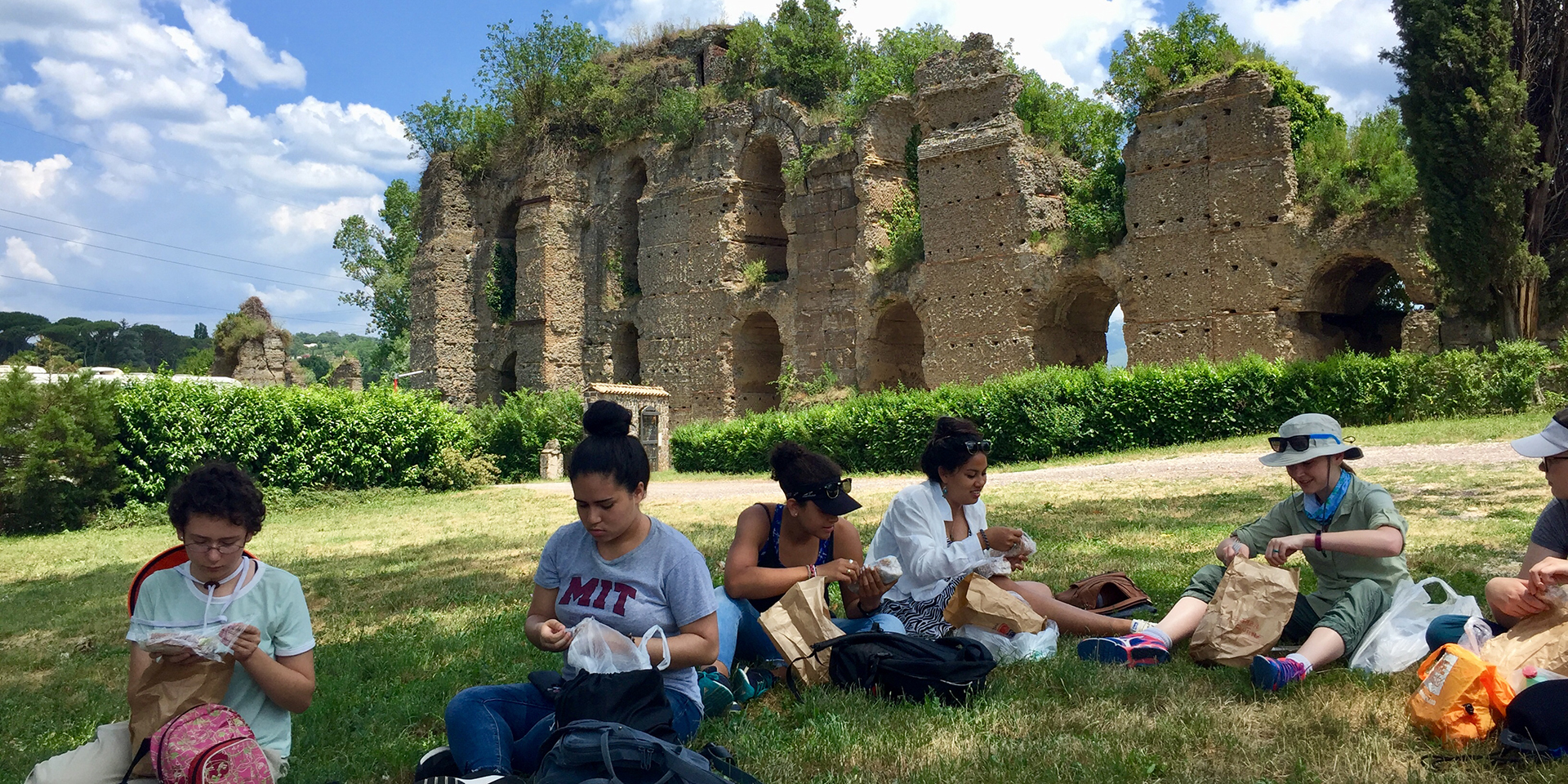ONE-MA3: Analyzing Ancient Aqueducts
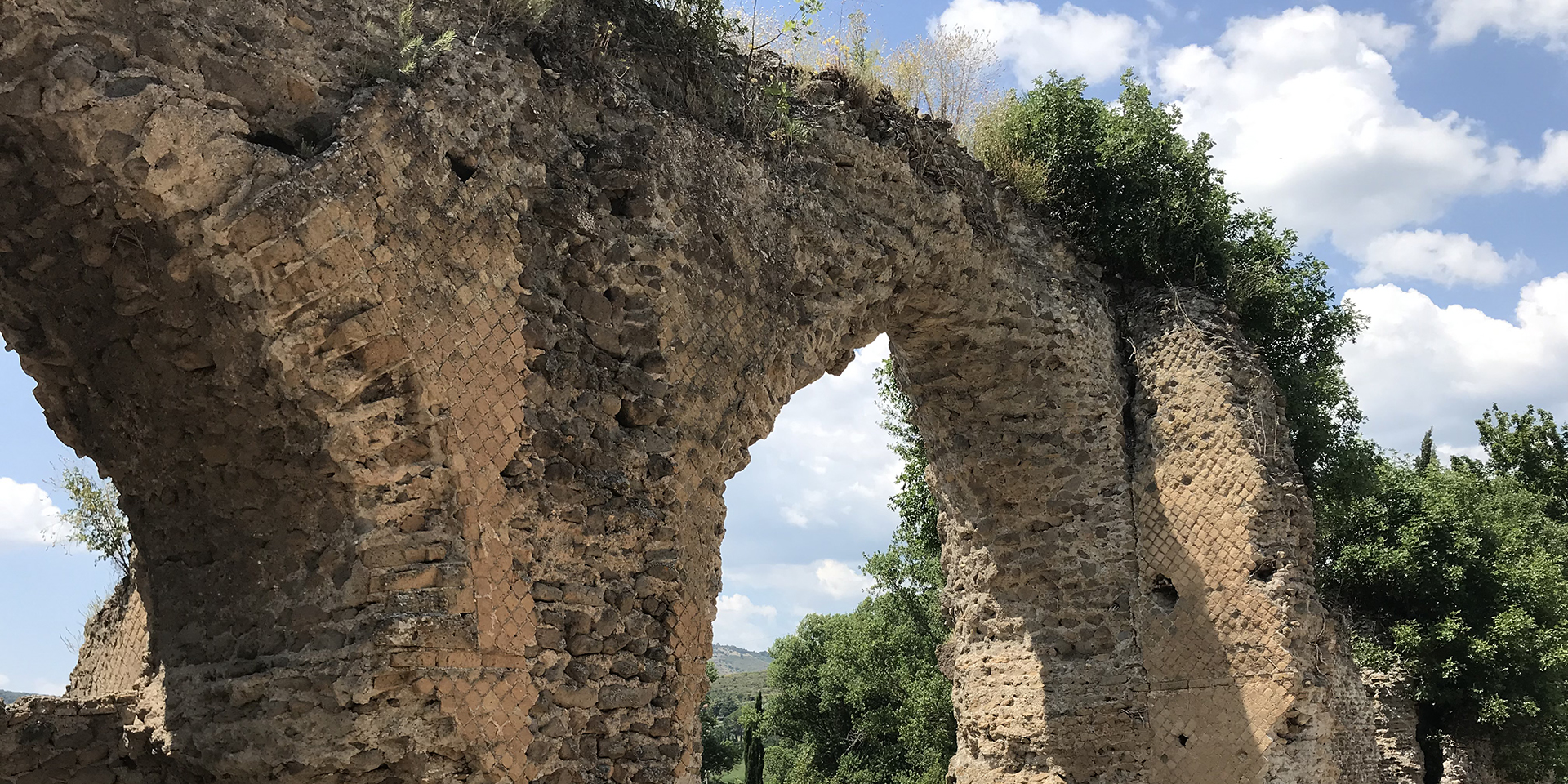
By Rovi Porter ’22
The central focus of the day was learning about Aqueducts (a structure that the Romans built to transport water by using gravity). Yesterday at the American Academy in Rome, we had a preview of an aqueduct when we climbed down into one underneath the classroom. With that introduction, we were primed for Duncan Keenan-Jones, an expert on Roman Aqueducts, to show us the all of the intricacies that we overlooked on our first walkthrough.
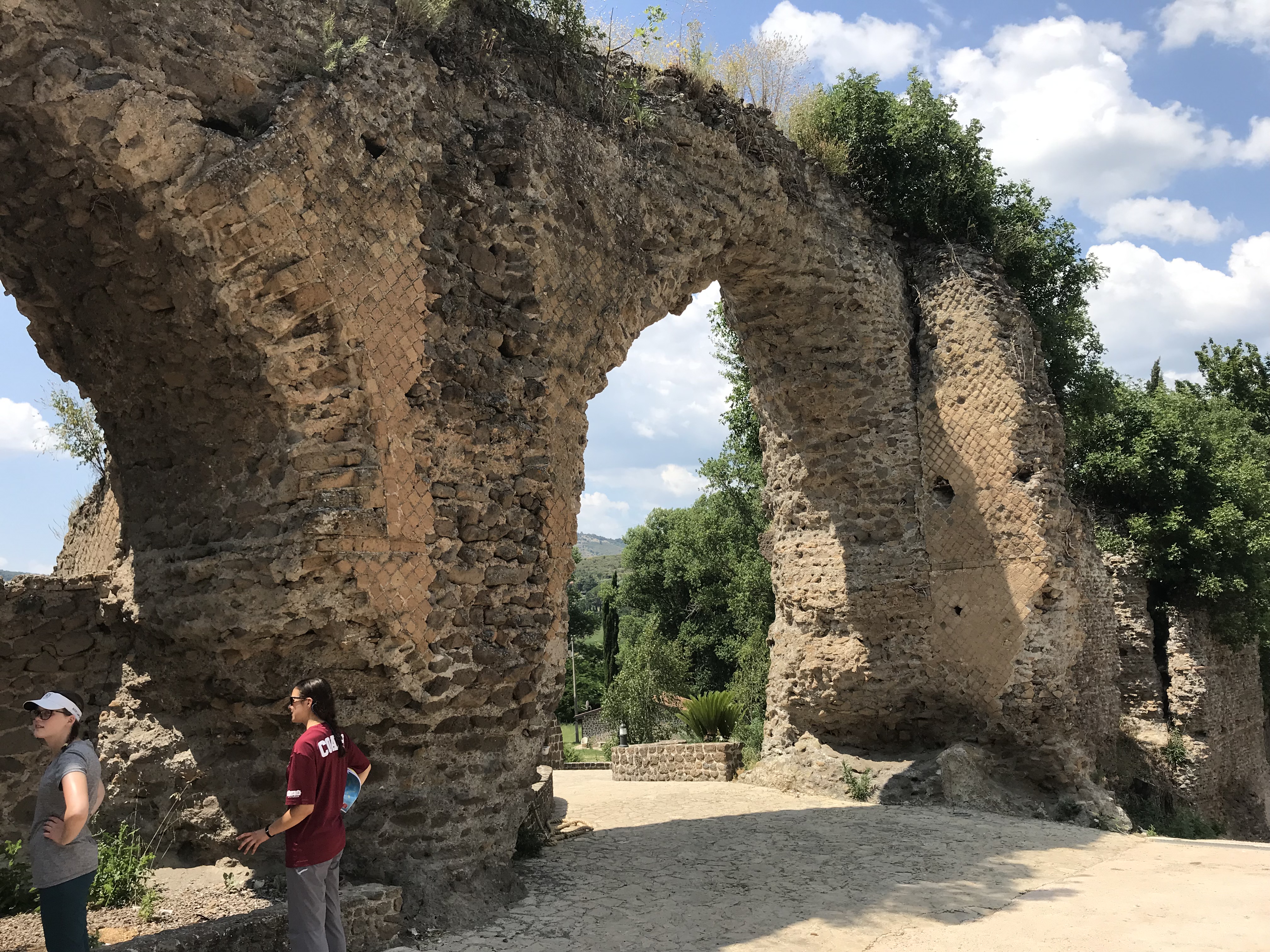
A section of the aqueduct that one group surveyed and found three different types of mortar, indicating repairs or restoration
Duncan began the day by quizzing us on the quantity and quality of these aqueducts. Assuming there would be some harmful effects of the lead pipes Romans used, I imagined that there would be lead poisoning from the water. Even Vitruvius (Professor Admir Masic’s favorite Architect/Engineer) noted in his books to use ceramic pipes instead of lead pipes due to the potential health issues. However, they were still widely used outside of eastern Rome, probably since they were easier to make. To my surprise, research on ancient aqueducts have shown that this was likely not a problem because of the calcite that built up along the pipes. Another reason the iron may not be harmful was because there was always a constant flow of water, which means that water did not interact with the lead as much as it does today. After learning about basic structures used to build these aqueducts and how they wisely portioned their water, we traveled an hour outside of Sermoneta, Italy to see the Aqua Anio Novus aqueduct.
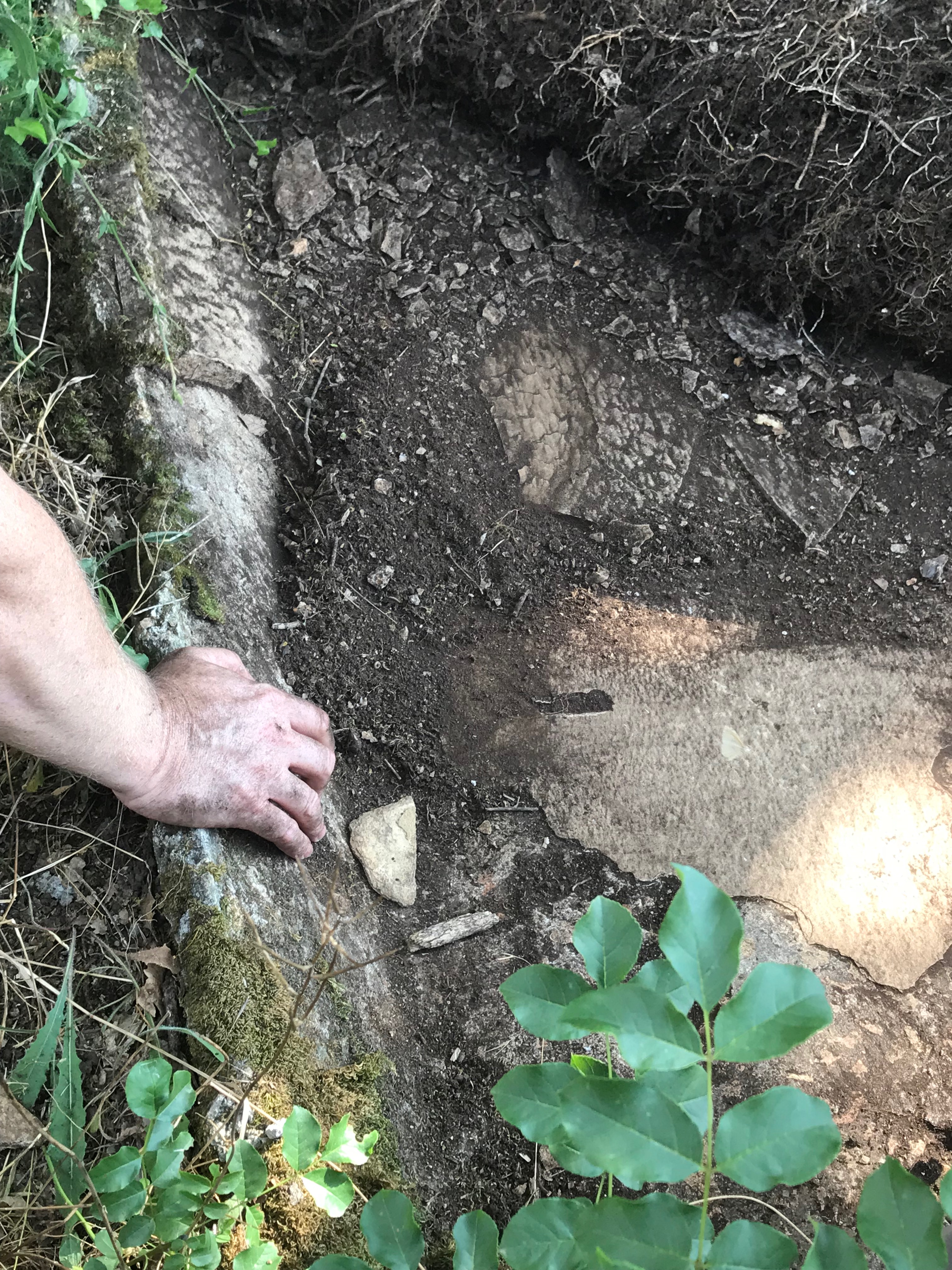
The uncovered bottom of an aqueduct that water flowed through, which is covered in travertine
There, we split up into groups and analyzed various sections of the aqueduct in order to hypothesize and determine relative ages. Once we got to our section, we surveyed the materials and generated a sketch. From there, we noticed the large Tuffs (volcanic rocks) were incased by brick and mortar, suggesting that the large stones were placed first. Then we noticed the opus reticulatum (diamond-shaped arrangement of bricks) lining the outer wall indicated a finish to the wall. However, there was another layer of bricks and cement attached to that layer, which we hypothesized to be a buttress that was supporting the wall, sometime after the original structure was built.
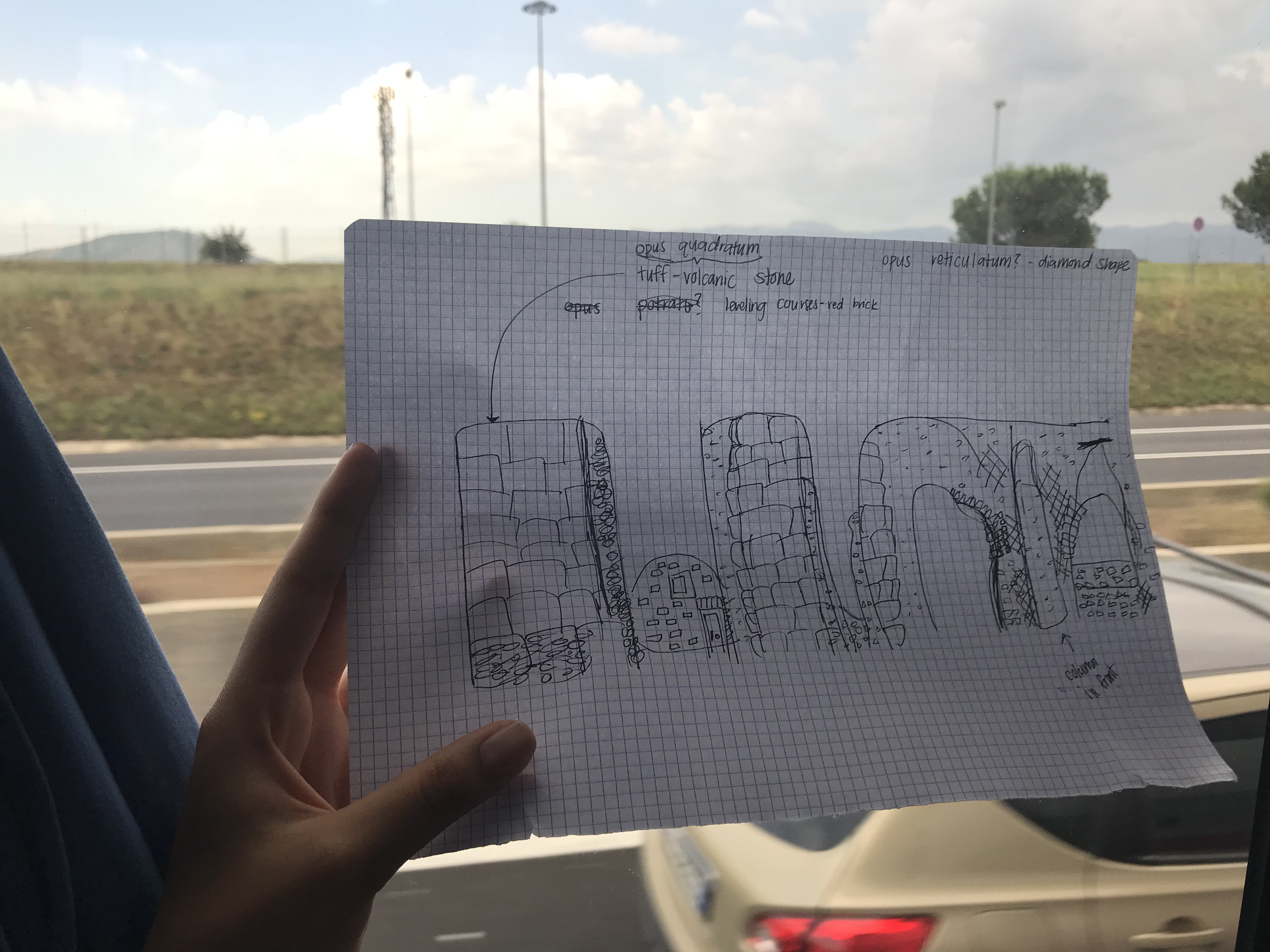
My sketch of my group’s section of the aqueduct
We also observed different types of cement by the coloration of the mortar which led us to believe that restoration may have occurred. As we were analyzing the materials, our TAs (Linda and Janille), Professor Masic and Duncan came by and informed us of the types of rocks and aggregates within the cement to help us make more informed theories. As we were surveying our section, our TA Linda, excitedly announced that they had uncovered some travertine (the calcite build-up)! It looked just like ripples in the water, which Duncan later explained is due to movement of water. These calcite deposits allow us to determine the velocity that the water was traveling when the aqueduct was in use (the faster the water moved the closer the crests would be).

My group surveying our section of the aqueduct, featuring the opus reticulatum brick work
Later, we walked up to the site where they found the bottom of the aqueduct and all I could think was “it looks like cement in dirt”. At the same time however, I looked over and saw Professor Masic gleaming with excitement. It’s only then that I remembered that the Romans created this water-resistant mortar that lasted over 1,500 years. With that in mind, I was able to appreciate the seemingly boring cement covered with travertine, dirt, and moss. After each group explained their conclusions about the order of materials added, and observed the mortar and travertine in the ancient aqueduct, we began our travels back to the Caetani Castle in Sermoneta. Tomorrow we leave for Terracina, where we will be visiting more archaeological sites!

TA Linda carrying her block of travertine
Share on Bluesky


